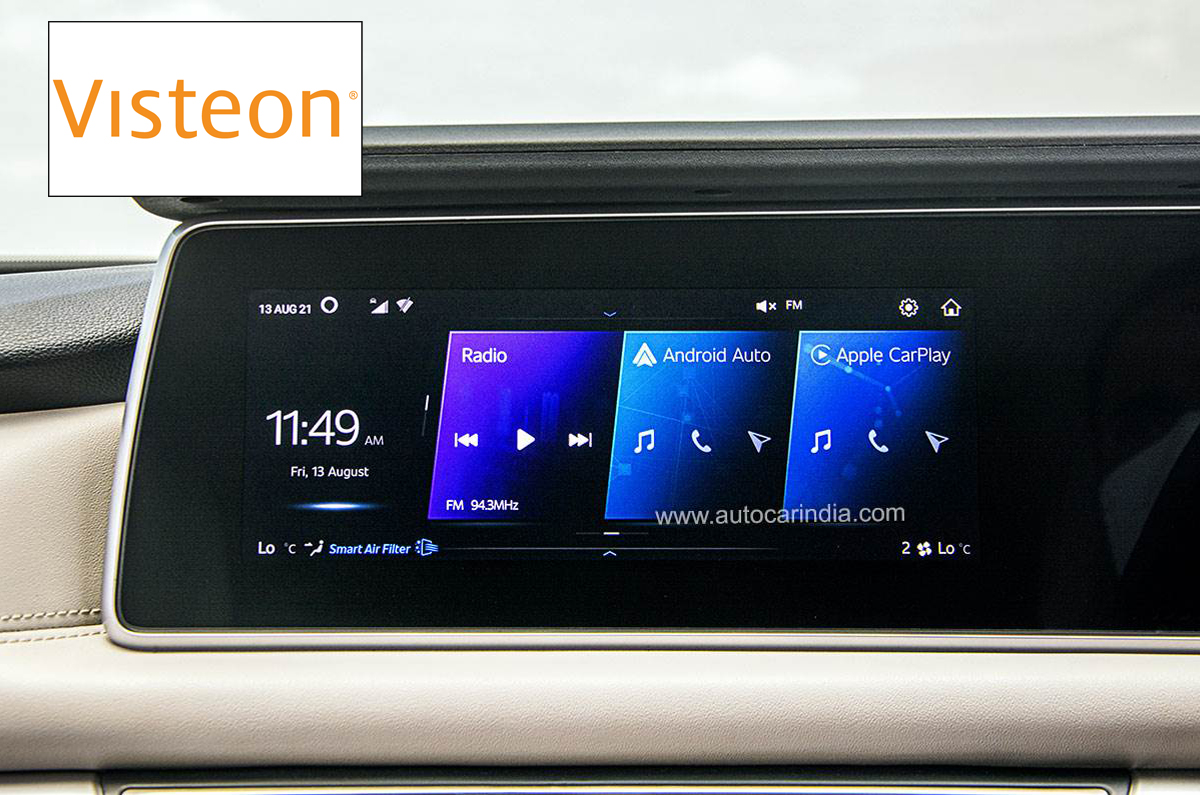
A 48-inch pillar-to-pillar screen will also prove to be popular, but voice control might see a rapid rise, says Sachin Lawande.
A look inside virtually any modern automobile is enough to tell you that screens are taking over the interiors. Not only are they increasing in size, number and prominence, the centre screen very often forms the focal point of the interior’s design.
- CarPlay and Android Auto will take over in-car controls
- Pressure on luxury carmakers to opt for bigger screens
Love it or loathe it, this trend isn’t going away soon. Speaking to Autocar India, Sachin Lawande, president and CEO of Visteon – a global leader in automotive cockpit electronics – said what’s driving this trend are three factors: user expectation thanks to familiarity with smartphones and tablets; ADAS, which needs a screen to be displayed on; and interestingly, phone projection systems like Android Auto and Apple CarPlay, which are increasingly playing a larger role in automotive electronics.
Increase in size
Lawande says, “Today, to support CarPlay, the display has to be a minimum of 8 inches and a certain resolution, and as they go forward, they are mandating bigger screen sizes because it can show more information and they can do it in a less distracting way.”
Beyond screen size, both Android Auto and Apple CarPlay are also influencing the number of screens in cars as they now plan on deeper vehicle integration and control. Both have announced their intent to take over control of core vehicle functions like the AC and powered seats. As Lawande puts it, “Basically, CarPlay and Android Auto will allow the phone to project information on up to three screens – your centre stack, on the cluster as well as on the passenger side, and that’s going to be accessible to all vehicles.”
Increase in number
Thus, with mass manufacturers being able to provide larger screens easily, along with the number of screens increasing, this will also have a domino effect as the luxury segment will go higher still in a bid to provide differentiation. As Lawande explains, “Most screens are currently 7 and 8 inches, but in the near future, 10 inches will be the standard. And what that does is put pressure on luxury manufacturers, who, in a desire to differentiate, will go in for larger screens. So we are, in fact, working on a 48-inch wide display, pretty much pillar to pillar.”
Voice is the future
A screen-dominated interior though is not necessarily where the industry would end up. When it presented its Avinya concept, Tata Motors made it quite clear that it believes that voice, and not screens, will be the future of the automobile interior. Here the Visteon head also concurs saying, “Voice is becoming a very credible solution. You’re not having an evening conversation with the car, you are commanding it to do certain things. So, there is a limit to the range of things you can say, which is actually helpful in improving the accuracy.”
According to Lawande, the company is also invested heavily in voice activation and its collaboration with Mahindra – where it also supplied the large twin screens – is an example of advanced voice control. “In order to enable the shift to voice you cannot do that with ECU architectures of today,” he says. “The processing demands on that require a shift to a different architecture, ethernet based and more processing capabilities like SmartCore on the XUV700 and you can see it offers a lot of voice capability, and it’s also very accurate.”
So while screens will certainly be a major aspect of a car’s interior, how they are present and whether or not they form the focal point inside is still uncertain, however, what looks more likely is that voice control may rapidly emerge as the dominate vehicle interface with screens playing a complementary role, thus in the future, we’ll likely be having more conversations with our vehicles rather than touch interactions.
Do you think screens in cars are getting out of hand? Let us know in the comments below
Also see:
Android Auto to get design overhaul, will fit all screen sizes
Screen Time
